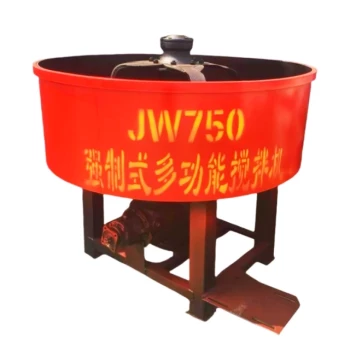Selecting the right winch isn’t just about raw power—it’s about matching technical specifications to your specific needs while ensuring safety and cost-efficiency. Whether you’re recovering vehicles off-road or handling heavy loads industrially, understanding winch parameters like traction force, speed, and rope capacity can mean the difference between seamless operation and catastrophic failure. This guide breaks down these critical factors with actionable insights to help you make an informed decision.
Winch Performance Fundamentals
Rated Traction Force: Matching Power to Your Load
The rated traction force (or pulling capacity) is the cornerstone of winch performance. It determines how much weight your winch can safely handle.
- Rule of Thumb: Your winch’s traction force should exceed your typical load by at least 1.5x. For example, a 5,000-lb vehicle requires a winch with at least 7,500 lbs of capacity to account for friction, incline, or mud resistance.
- Safety Margin: Overloading a winch strains its motor and gearbox, leading to premature wear. Ever wondered why industrial winches often have 2x or 3x capacity buffers? It’s to mitigate sudden load spikes.
Pro Tip: For off-road recovery, factor in terrain challenges. A winch branded for construction machinery, for instance, might prioritize higher traction for uneven ground.
Working Speed vs. Efficiency: Finding the Balance
Winch speed (measured in feet per minute) affects productivity but often trades off with power and heat generation.
- High-Speed Winches: Ideal for repetitive, light-duty tasks (e.g., warehouse operations) where speed trumps raw power.
- Low-Speed, High-Torque Models: Better for heavy loads (e.g., industrial rigging) where control and durability matter more than speed.
Did You Know? A winch operating at max speed continuously can overheat, reducing its lifespan by up to 30%.
Rope Capacity and Safety: Avoiding Critical Failures
Rope or cable length and material directly impact usability and safety:
- Synthetic vs. Steel Rope: Synthetic ropes are lighter and safer (they don’t whip if snapped) but degrade under UV exposure. Steel cables are durable but add weight and require regular lubrication.
- Capacity Warnings: Exceeding the drum’s rope capacity causes improper spooling, increasing the risk of jams or breakages.
Visual Metaphor: Think of rope capacity like a fishing reel—overstuffing it leads to tangles, while underloading reduces functionality.
Practical Applications and Tradeoffs
Off-Road Recovery: Prioritizing Traction and Durability
For off-road enthusiasts, winches must withstand mud, water, and shock loads:
- Waterproofing: Look for sealed motors and corrosion-resistant coatings.
- Durability Tests: Winches branded for rugged use often include reinforced gear housings and thermal protection.
Interactive Question: How often do you check your winch’s brake system after a recovery? Failing brakes are a leading cause of rollbacks.
Industrial Use: Speed and Rope Longevity Demands
In construction or manufacturing, winches face different demands:
- Cycle Life: Industrial winches prioritize long rope life and consistent performance under frequent use.
- Load Monitoring: Some advanced models include load sensors to prevent overloading—critical for overhead lifting.
Case Study: How Overloading Impacts Winch Lifespan
A 2021 study of construction sites found that winches operated at 90–110% of their rated capacity failed 50% sooner than those used at 70–80% capacity. Key takeaways:
- Cost of Overuse: Frequent overloading leads to motor burnout and gear tooth wear.
- Preventive Measures: Regular maintenance (e.g., greasing gears, inspecting ropes) can double service life.
Conclusion: Actionable Winch Selection Tips
- Match Traction Force to Your Worst-Case Scenario, not just average loads.
- Balance Speed with Duty Cycle—high speed isn’t always better.
- Inspect Rope and Drum Capacity monthly to prevent safety hazards.
- Prioritize Weatherproofing for Outdoor Use to avoid corrosion.
For those in construction or heavy-duty industries, exploring winches designed for machinery can offer the robustness needed for demanding environments. Remember: A well-chosen winch isn’t just a tool; it’s a lifeline when stakes are high.
Final Thought: What’s the one load-related near-miss you’ve experienced that made you rethink your equipment choices?
Related Products
- Electric and Hydraulic Winch for Heavy Duty Applications
- Warn Winch Windlass Boat Trailer Winch
- Electric 120V Boat Winch by Badlands
- Best 18000 Pound Drum Anchor Trailer Winch
- 12000 lb Heavy Duty Electric Boat Winch
Related Articles
- How Industry-Specific Electric Winch Configurations Boost Efficiency and Safety
- How to Maximize Electrical Winch Performance in Challenging Environments
- How Electric Winch Safety Features Prevent Catastrophic Industrial Accidents
- How Electric Winches’ Engineering Enhances Efficiency and Safety in Heavy-Duty Applications
- How Electric Winches Outperform Hydraulic Systems in Heavy-Duty Applications



















